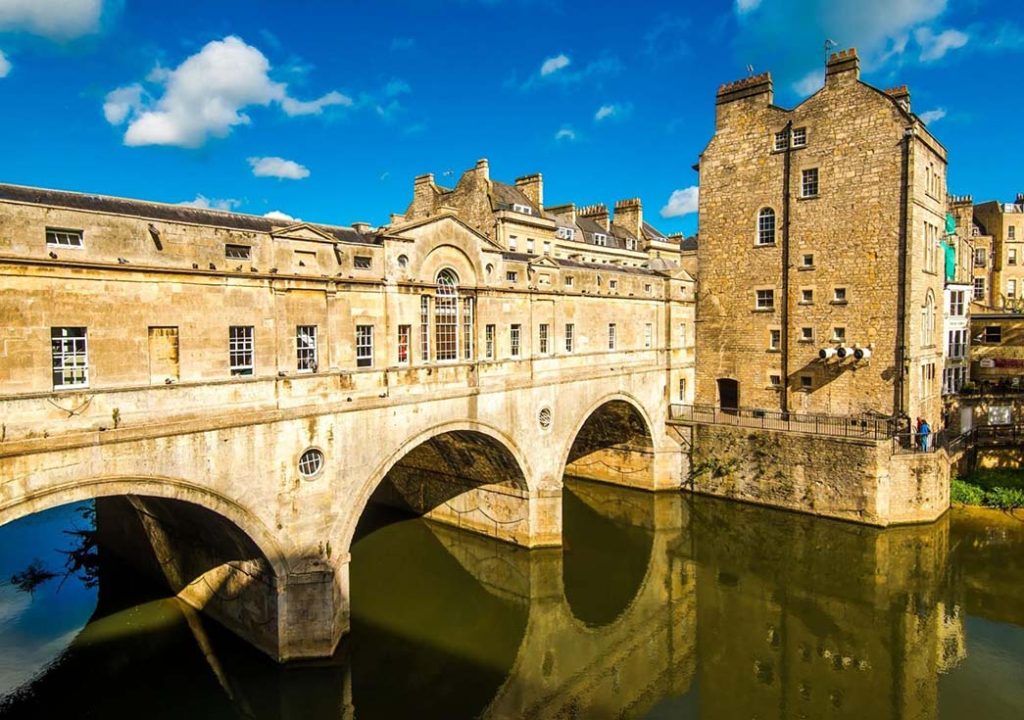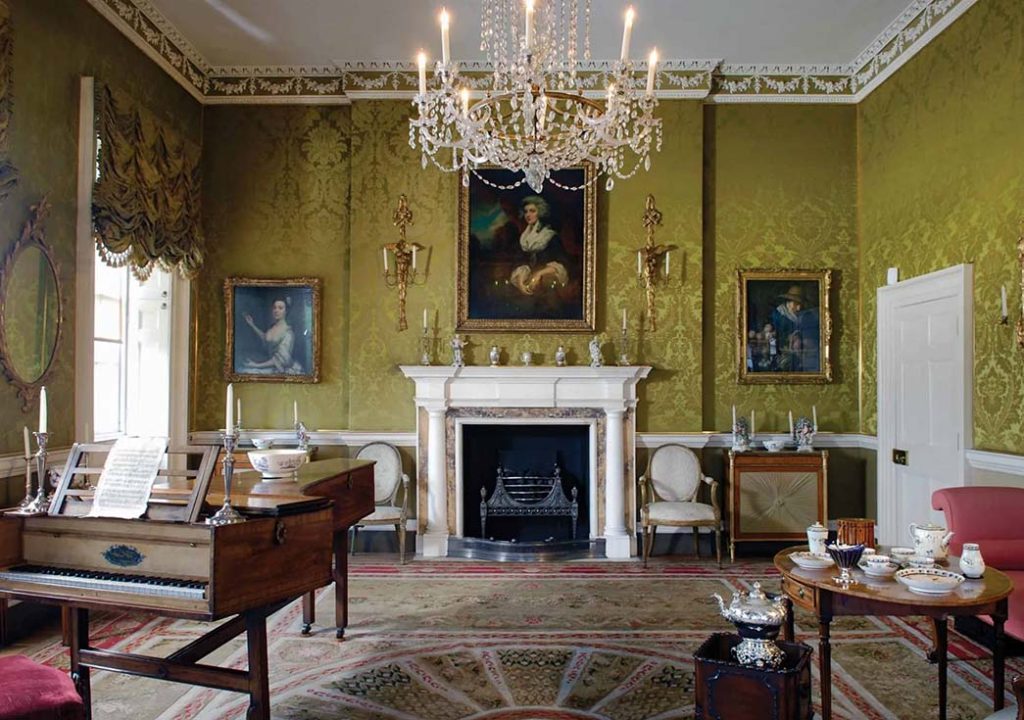Embarking on a historical escapade through the charming city of Bath proved to be a journey not just through the annals of time but an immersive experience that stirred the soul. Bath, with its cobbled streets and architectural marvels, unfolded like a living history book, inviting me to step back in time and explore its captivating narrative.
The Allure of Roman Baths: Ancient Whispers Amidst Emerald Waters
The day commenced with a visit to the illustrious Roman Baths, a quintessential exploration into Bath’s ancient roots. The allure of this historical gem isn’t confined to its well-preserved structures; it extends to the ethereal ambiance that transports visitors to the heyday of Roman Britain.
As I wandered through the interconnected chambers, the tepid emerald waters of the Great Bath reflected the grandeur of a bygone era. The elaborate heating system, still visible beneath the floor, hinted at the engineering brilliance of Roman architects.
The Roman Baths, with their steaming pools and ancient echoes, are a mesmerizing testament to the Romans’ mastery of both aqueducts and leisure. Standing at the water’s edge, I felt transported to an era where togas were the attire du jour, and communal bathing was a cherished ritual.
Ticket Information: The Roman Baths offer an adult admission fee of £25. To maximize your historical immersion, I recommend purchasing the joint ticket for the Roman Baths and the Fashion Museum at £28.
Opening Hours: The Roman Baths usually open at 10 am. For an intimate encounter with history, plan your visit during the early hours to avoid crowds and bask in the mystique of the site.
Bath Abbey: A Spiritual Sojourn in Gothic Grandeur
Bath Abbey is a fine example of Gothic architecture and graces the city’s skyline. The abbey’s exterior, adorned with intricate sculptures, served as a prelude to the spiritual odyssey awaiting within.
As I stepped into the hallowed halls, the celestial aura enveloped me. Bath Abbey, with its vaulted ceilings and kaleidoscopic stained glass windows, felt like a sanctuary frozen in time. The sculpted angels seemed to dance in the sunlight filtering through the windows, creating an ethereal atmosphere.
Bath Abbey’s divine architecture is a testament to the spiritual devotion of centuries past. As I sat in quiet contemplation, the echoes of hymns and prayers from generations long gone seemed to reverberate through the sacred space.
Ticket Information: Entrance to Bath Abbey is free, but donations are encouraged. Opt for one of the guided tours to gain deeper insights into the abbey’s history and architecture.
Opening Hours: The abbey opens its doors at 9 am, offering a serene start to your day. Plan your visit during choral services to experience the abbey resonating with celestial melodies.
Pulteney Bridge: A Riverside Stroll Through Architectural Time

Wandering along the picturesque River Avon, my journey led me to the iconic Pulteney Bridge—a testament to Bath’s architectural splendor. This picturesque bridge, lined with boutique shops and cafes, stands as a testament to the city’s timeless elegance.
Climbing to the upper level of the bridge, I was treated to panoramic views of the river and the charming weir below. The rhythmic flow of the water seemed to narrate tales of centuries gone by. Pulteney Bridge, with its Georgian charm, beckons visitors to savor the quintessence of Bath’s architectural history.
The stroll across Pulteney Bridge was akin to a leisurely journey through an architectural time capsule. The boutiques lining the bridge add a touch of modernity to its historical grandeur, creating a delightful fusion of past and present.
Exploring Bath Abbey: A Spiritual Symphony Amidst Stones
The next chapter of my historical exploration in Bath unfolded at the majestic Bath Abbey—an architectural masterpiece that resonates with centuries of spiritual significance. As I approached, the imposing structure loomed against the sky, exuding an aura of tranquility and reverence.
Stepping through the entrance, I found myself enveloped in a sacred ambiance. The awe-inspiring stained glass windows, intricate stone carvings, and the vaulted ceilings told tales of a past where craftsmanship and devotion converged. Bath Abbey, with its origins dating back to the 7th century, stands as a testament to the enduring spirit of faith.
Opting for the Tower Tour, I embarked on a journey upward, climbing the narrow and winding staircase that promised panoramic views of Bath. The ascent, though a bit challenging, heightened the anticipation of the breathtaking vistas awaiting me at the top.
Reaching the summit, I was greeted by a 360-degree panorama that stretched across the cityscape. The honey-colored rooftops, the meandering River Avon, and the distant hills painted a picturesque tableau. The guided tour provided historical insights into the landmarks visible from the heights, adding layers of context to the visual feast.
The Tower Tour at Bath Abbey is priced at £8 per person, a nominal fee for the unparalleled views and historical insights it offers. Purchasing tickets in advance is recommended, especially during peak tourist seasons, to secure a spot for this captivating experience.
Bath Abbey opens its doors to visitors from 10 am, making a morning visit ideal for those seeking a serene atmosphere. The early hours provide a quieter and more contemplative environment, allowing visitors to absorb the spiritual ambiance without the hustle and bustle of larger crowds.
Exploring No. 1 Royal Crescent: A Stroll Through Georgian Opulence

As I continued my journey through the historical marvels of Bath, the grandeur of No. 1 Royal Crescent beckoned me—an elegant townhouse frozen in the splendor of Georgian aristocracy. Stepping across the threshold felt akin to crossing the boundary between centuries, with each creak of the floorboards whispering tales of a bygone era.
The interiors of No. 1 Royal Crescent unfold like the pages of a well-preserved history book. Every room serves as a window into the daily lives of the Georgian elite. The attention to detail is astounding, from the meticulously crafted furnishings to the opulent tapestries that adorn the walls. Each corner seemed to resonate with the echoes of laughter, hushed conversations, and the genteel rustle of silk garments.
To fully absorb the ambiance and intricacies of Georgian living, I opted for a leisurely exploration. The guided tour, included with the admission fee, provided invaluable insights into the historical context and architectural nuances. The knowledgeable guides seemed to breathe life into the inanimate artifacts, making the experience all the more enriching.
Admission to No. 1 Royal Crescent is priced at £11 for adults, a reasonable fee for the immersive journey into the past it offers. The ticket includes the guided tour, enhancing the overall experience. Booking in advance is advisable, especially during peak tourist seasons, to ensure a seamless entry.
Choosing a morning visit to No. 1 Royal Crescent proved to be a strategic decision. The soft morning sunlight bathed the exterior in a golden glow, adding a touch of enchantment to the architectural allure. The relatively quieter hours in the morning allowed for a more intimate exploration, avoiding the bustling crowds that often gather later in the day.
For those planning a visit to No. 1 Royal Crescent, I offer a few words of advice. Take your time to soak in the details; every artifact has a story to tell. Engage with the knowledgeable guides—they are the custodians of the townhouse’s history and can provide fascinating anecdotes.
Parade Gardens: A Floral Symphony Along the Riverbanks
Concluding my historical odyssey, I sought solace in the enchanting Parade Gardens—a floral oasis nestled along the banks of the River Avon. These meticulously landscaped gardens are a serene retreat, offering respite from the city’s historical hustle.
The gardens, with their well-manicured lawns and strategically placed benches, invite visitors to unwind amidst nature’s embrace.
Ticket Information: Entrance to Parade Gardens is priced at £7.50 for adults. The fee contributes to the gardens’ maintenance, ensuring a tranquil haven for visitors.
Opening Hours: The gardens open at 10 am. Plan an afternoon visit to bask in the beauty of the floral arrangements under the soft glow of the sun.
Bath, with its seamless fusion of history and contemporary allure, left an indelible mark on my travelogue. Each historical site, from the Roman Baths to No. 1 Royal Crescent, offered a unique facet of Bath’s multifaceted identity. As the golden hues of twilight embraced the city, I found myself not just a visitor but a time traveler, immersed in the chapters of Bath’s storied past.
Parting Travel Tips:
1. Early Mornings for Tranquility: To savor the historical sites without the hustle and bustle, plan your visits during the early mornings or late afternoons, especially during weekdays.
2. Seasonal Sensations: Each season lends a unique charm to Bath’s historical sites. Whether it’s the cozy ambiance of autumn or the blooming beauty of spring, the city adapts its allure to the changing seasons.